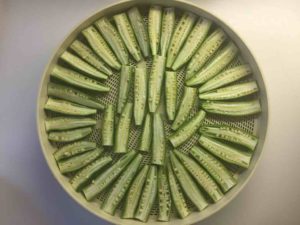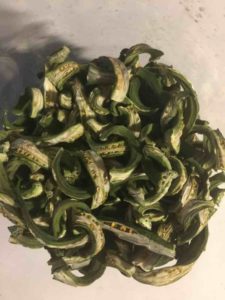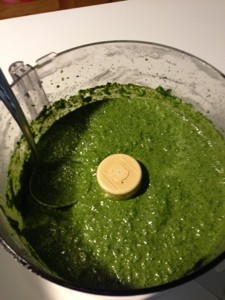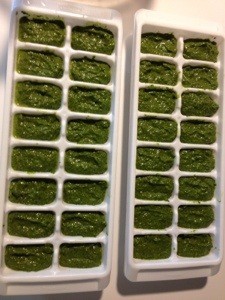With plenty of okra still coming in, yet seeing that the end is in sight we decided to try our hand at dehydrating okra. Earlier this year we tried our hand at drying a spicy version of okra in the oven set at 150º, which is as low as our oven goes. It turned out okay but was not quite what we wanted. This time we hit the mark. Here's how.
It's all very easy, actually. It just takes a little time and if you don't have a dehydrator an oven on the lowest baking temperature setting will do. We were concerned with how much energy the oven would use in the process, so we pulled out the old dehydrator. Ours is a very simple one. You just plug it in and it goes. We tested it with a laser thermometer and it blows a steady warm air at about 110º.
- Pick quite a quantity of small okra, three to four inches long. Keep in mind when it dries down it is all going to be much smaller. Pick a lot.
- Wash the okra and cut both ends off; just a tiny bit off both ends.
- Slice each pod lengthwise in half.
- Lay the pods out on the tray, only one layer thick, cut side up.
- Plug the dehydrator in and let it go, usually 36 hours. If you have a temperature setting keep it low, below 150º.
- When the pods crunch to your bite, they are ready to store in jars in a cool dark pantry.
- Repeat the process–several times–because you are going to eat them up like snack food.
Dehydrated okra should keep for a year or more. Snack on it or throw it into soups and stews. We still have plenty here on the farm. Give us a call to set up a time to come out and get some.


 Nothing says Italian like fresh basil, and there is no better way to save your extra basil than by turning it into a pesto base. There are very few rules when it comes to pesto recipes, except that it should contain basil and olive oil. Beyond that add what you want . . . what you like. We like to add pine nuts and garlic. Blend your mix in a food processor, adding enough olive oil to make a medium-thick paste. Parmesan cheese and butter can be added later, if you are wanting a traditional pesto.
Nothing says Italian like fresh basil, and there is no better way to save your extra basil than by turning it into a pesto base. There are very few rules when it comes to pesto recipes, except that it should contain basil and olive oil. Beyond that add what you want . . . what you like. We like to add pine nuts and garlic. Blend your mix in a food processor, adding enough olive oil to make a medium-thick paste. Parmesan cheese and butter can be added later, if you are wanting a traditional pesto.